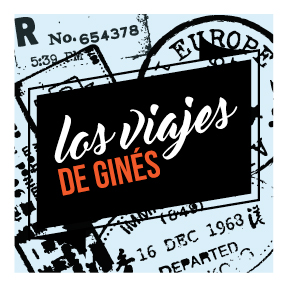In what could easily be a rom-com plot, when I was “on the edge of seventeen” as Stevie Nicks would sing, I had a giant crush on a young and very blond Irish sailor. I think it was the first time in my then short life that I broke my own “I do not like blondes” rule. Although thoroughly romantic, we promised to meet at his next port of St. Thomas – and we did, this story does not have a happy ending, because I never saw each other again after that (I think his next regatta was in New England). Although he came to the Caribbean in search of adventure, I was the one who was always eager to know his mythical land, where the rainbow must end (or start?), the people are supposed to be very lucky (although a deep look at the history of the country would suggest otherwise), you toast with whiskey (Sláinte!) and you can find four-leaf clovers: Ireland.
By then I already knew a mythical rock band from Dublin, who sang about violence in Northern Ireland, mentioned Martin Luther King, Jr. in their songs and were already idols for me: U2. In other words, Ireland already lived in my dream destinations of ‘someday’. Someday took a while to get here. It was only this year that the stars aligned for the visit to materialize. I figured supposed I would like it. I did not anticipate that I would fall madly in love.
It was a coincidence that I found out that some very good friends were going to be there, so then I made plans to meet up with them. There are many places that I have visited – and very much enjoyed, by myself. But Dublin is much more fun with friends (although I dare to guarantee that, even if you are alone, you would make friends there), so this was a happy twist of fate.
Despite having a complicated and long-suffering history, being a country founded by Vikings, but at the same time being relatively young (it only became an independent republic on December 29, 1937), its capital, Dublin, is an infinitely cheerful city. On any the day that you decide to explore its streets, you will find live music of all types: typical Irish, hard rock, dive bars, current pop music with an Irish flair, in short, something for all tastes. You can toast with a good Irish whiskey or try their world-famous beers. This is not to say that Dublin is simply a party town; on the contrary, it has such a rich history that it takes several days to go through everything you need to know and see when you visit it. And that’s just Dublin. If you visit the whole island, you should visit Cork, the cliffs of Limerick, Killarney, Blarney Castle… you’ll get lost in its green landscapes and in a topography unlike any I’ve seen in the world. Today will tell you about Dublin, the capital city, a cradle of musicians, dramatists and writers, and Galway, a coastal city on the western coast of Ireland that is about a three-hour drive from Dublin. I missed so much to see! But as I was planning my first trip to Europe, one of my very best friend’s dad, who worked for many, many years in his own travel agency, told me “When you go to Europe, always go thinking that you will return. If not, you will be overwhelmed because you’re going to want to see so many things, that you’re not going to see anything well”. Thank you, Don Roberto, for that great piece of advice that I have applied ever since.
So, let’s get down to business, what to do in Dublin? Before leaving, I asked a college professor of mine who lives in Europe and he told me “the best thing to do in Dublin is to get out of Dublin”. Well, I have to disagree. While the West Coast and the Wild Atlantic Way are truly impressive landscapes, getting lost in the cobblestone streets of the capital city is an attraction in itself. As for any European destination, wear comfortable shoes. So that you don’t end up like me, basically stealing tennis shoes from my travel mate pretty much for the duration of our trip. You’re going to walk and walk and well, you do not cross the Atlantic to go to sleep! The good thing about traveling with like-minded but flexible friends is that you do not necessarily have to do everything together at exactly the same time, all the time. For example, do you know which is the number 1 tourist attraction in all of Ireland? No, it’s not the Cliffs of Moher or Blarney Castle; it is the Guinness Brewery tour. It is said it is because of the beautiful views of the city from the rooftop, but let’s be honest, it’s the most famous Irish beer in the world! And in Ireland, you can find good beer and good whiskey. And a good song that talks about whiskey and beer! In addition to comfortable shoes, to visit Irish pubs, I recommend learning a classic song from The Dubliners, an Irish folk group founded in Dublin in 1962, responsible for making Irish music known throughout the rest of Europe: The Wild Rover. After a night in Dublin, you will already know the chorus and when and how you should clap. It says in part: “I’ve been a wild rover for many years and I’ve spent all of my money on whiskey and beer / But now I’m returning with gold in great store / And I never will play the wild rover no more … “. You could spend entire nights bar hopping in the city and I guarantee that you will sing this song more times than you will care to remember.
The History of Modern Ireland:

Just as background, because the idea here is not to take you back to a European History class, and only to understand why I say that Ireland feels happy in spite of herself. Its history is ancient and that is palpable in its cobblestone streets, in the medieval Dublin, in the ruins of medieval abbeys that you frequently see once you hit the road to leave the capital city. Gallic stories, Vikings, immigration of immense magnitude during the 19th century, still leave a mark in modern Ireland. Irish immigration to the United States is one of the most significant migratory phenomena from Europe to America. Most of these immigrants were Catholics, even though the conflicts in Ireland and Northern Ireland have not been considered religious. Just a few examples: in the US, eight presidents of Irish descent have been elected (think of the powerful Kennedy clan); the cathedral of the city of New York is St. Patrick’s Cathedral; in Boston, there is a moving monument to the victims of the Famine of the 1800s. The so-called Great Irish Famine (An Gorta Mór, in Irish) was particularly devastating. Rural families had small plots of farming land, crops were harvested only once a year and that was barely enough to feed a family. Between 1846 and 1848 a plague in the potato fields killed 1 million people. Another million left for the United States, Scotland, England, Canada, and Australia, mostly. As of today, the Irish population has not recovered from the famine, and the population of the entire Irish Republic does not reach 5 million people (before the famine, there were close to 8 million). Although they suffered from discrimination, as many immigrants do (in the United States, they preferred German workers), an influential diaspora was formed, particularly in the United States. It was here that they began to finance and support the Irish independence movement. In 1858, a secret organization was formed, and it was dedicated to the armed rebellion against the British. But despite the support received from the United States, at that time, the separatist movement had little force. After the famine, the rural population began a struggle to achieve rights of possession and fair distribution of land. The origin of the conflict is the following: since the seventeenth century, Irish landowners were mainly Protestants, descendants of English and with a strong British identity. Irishmen claimed that the land had been unjustly stolen from their ancestors and granted to the English of Protestant descent during the English conquest of the country. The Irish Land League was formed to defend the interests of farmers. The most effective tactic was the boycott (this word has its origin in this precise conflict) that the Irish applied to the landlords of English origin, sadly, often coming to violence. In 1916, a nationalist group tried to carry out a rebellion that ended in a lot of bloodshed (to learn more about this part of history, visit the museum/prison of Kilmainham Gail -The Jail. I recommend making a reservation at least 3 days in advance) and that ended in a civil war between the years of 1922 and 1923. Under the leadership of Michael Collins (remember the film by Liam Neeson by the same name?), in 1921 the Irish independent state was established, with a new army and a new police force, this under the Anglo-Irish Treaty, which left the country deeply divided. It is in 1937 that the Irish Constitution is adopted, which establishes an independent, democratic state and guarantees fundamental rights. Later on, came more conflicts, known as that “The Troubles” (remember The Devil’s Own, with Brad Pitt and Harrison Ford?), a very subtle way to call the conflict for the division of Ireland and Northern Ireland, but we’ll talk about that later on another entry.
With this established, I can tell you, the first thing I could appreciate when arriving at our hotel, the Custom House Hilton Garden Inn, perfectly located so that most of the sites were at a walking distance (despite not being prohibited, there are not many Uber drivers in the city, therefore the waiting times when you request a ride, are long; there is a local app called myTaxi which is where there are more affiliated drivers and wait times are shorter), was the river that runs through the center of Dublin, the River Liffey – the river of life. There are 21 bridges over the River Liffey, from Chapelizod to the sea; some are used only for public transportation. Most of the bridges were named to honor patriots of independence, such as Rory O’Moore and Mellows. Most of the modern bridges, such as the James Joyce, tend to honor writers. Almost half were originally built in the 19th century. The Millennium Bridge, the closest to our hotel, is one of three for pedestrians, while the most famous, the O’Connell Bridge, has four lanes of cars.
Churches and Museums:
Those who already read me know, I love museums and I love churches. And Dublin has good museums, majestic medieval churches that serve as museums, and 3 cathedrals!
National Gallery of Ireland: The National Gallery of Ireland is housed in a building that does not say much from the outside, but inside it is a treasure. It houses works by Picasso, Seurat, Monet, and its most visited work, “The Taking of Christ” by Italian artist Caravaggio. Admission to the museum is free of charge.

Dublinia: It is a historical attraction that recreates medieval Ireland and Vikings and is located in a part of Christ Church, in the medieval part of Dublin.

EPIC: It is the interactive museum about emigration, located on the docks of the River Liffey and that tells the story of the Irish diaspora (and is right next to our hotel in the Custom House Quail). Right in front of the museum is the monument to the victims of the Great Famine. It is quite overwhelming.

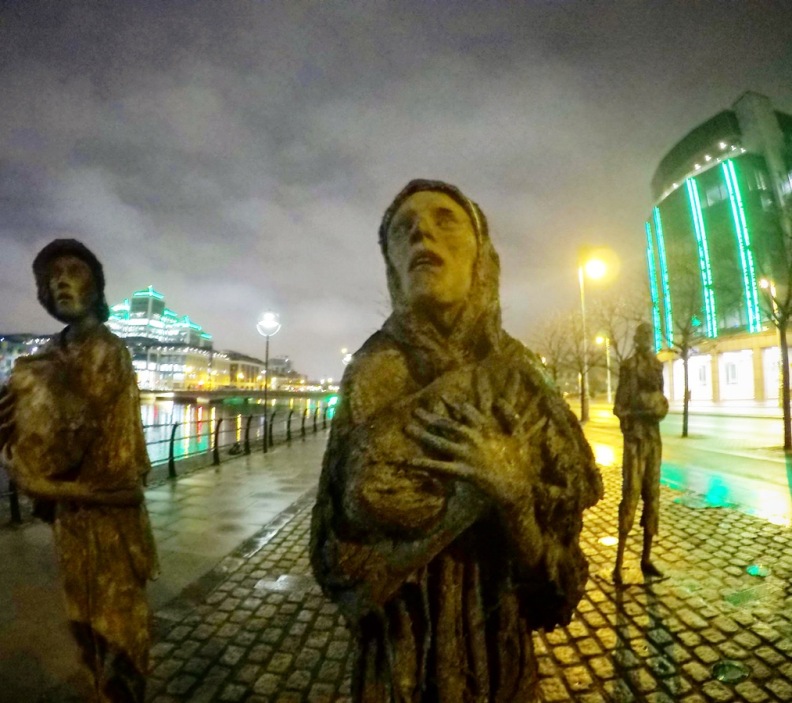
Dublin Wax Museum: Did I tell you that I am a faithful Oscar Wilde fan? Well, here I saw the ugliest Oscar Wilde I’ve ever seen! It’s nothing out of this world. You’ll see the most famous playwrights in Ireland mingling with Pope Francis, a robotic Saint Patrick talking to you, Harry Potter and a couple of other superheroes. You can have fun if you are slightly tipsy.

Christ Church: It is Ireland’s spiritual heart; a medieval church founded in 1028, imposing for its enormous size and bell tower, and formally known as the Cathedral of the Holy Trinity and, in turn, the cathedral of the United Diocese of Dublin and Glendalough and the cathedral of the ecclesiastical province of the United Provinces of Dublin and Cashel of the Anglican Church of Ireland. Here, I had one of the most unforgettable experiences of my life: they let me ring the bells of the church. And it was heard throughout half of Dublin! For an additional 4 euros, I recommend the guided tour.

St. Patrick’s Cathedral: St. Patrick’s Cathedral, patron saint of Ireland and known for having taught agriculture to the people, was founded in 1191, and is the National Cathedral of the Church of Ireland, but not the Bishop’s chair; that is Christ Church. With its 43-meter (141-foot) tower, St. Patrick’s is the tallest church (not Cathedral) in Ireland and the largest.
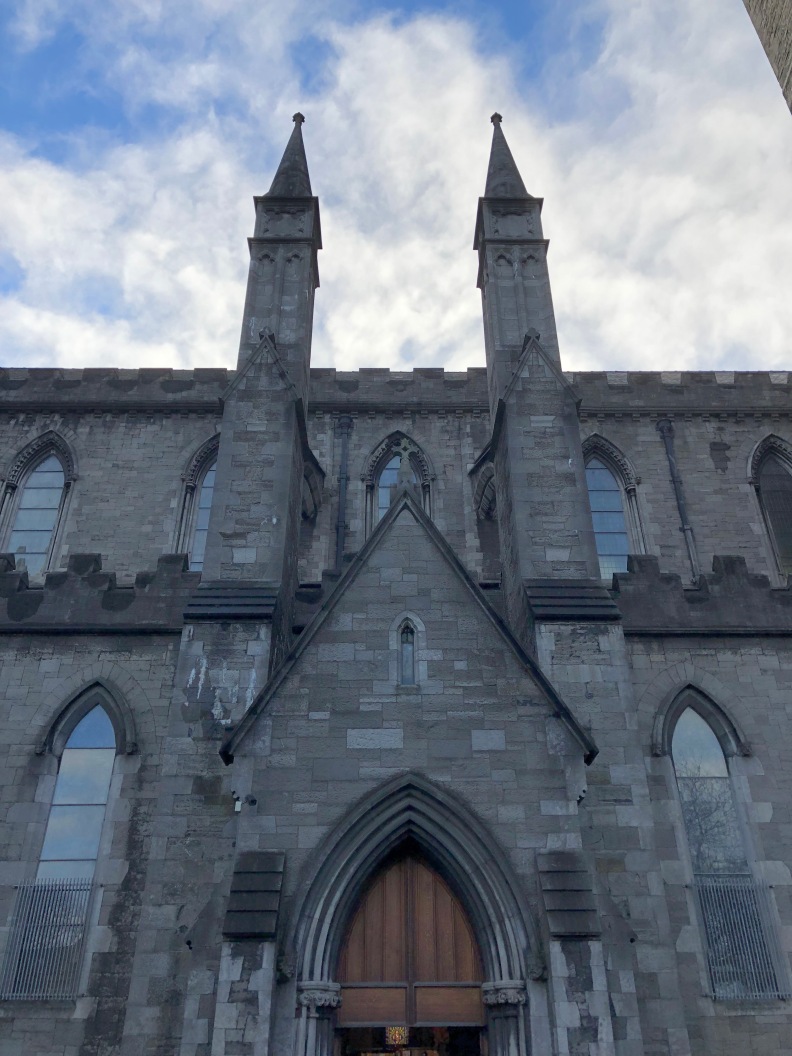
St. Mary’s Pro-Cathedral: It is the chair of the Catholic Archbishop of Dublin. “Pro-cathedral” means that it is a parish that is temporarily serving as a cathedral but does not yet have the formal title.
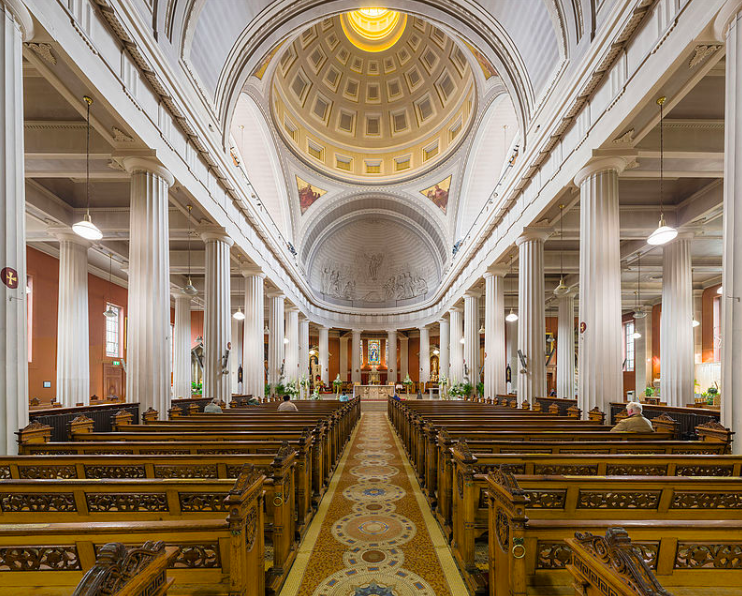
Trinity College and The Book of Kells: This is one of the places I was dying to visit! The “Long Room” of the Trinity College Library. The university was founded in 1592 by Queen Elizabeth I, following the famous model British universities: Oxford and Cambridge. The Trinity College Library is the largest in Ireland, home to a massive collection of approximately 6 million books and manuscripts. To house its growing collection of literary content, several different library buildings have been built on the campus of the university over the years, but the most visited is without a doubt, the Old Library. Built in the 18th century, it is one of the most popular tourist attractions in Ireland, thanks to its exhibition of the Book of Kells, a 1,200-year-old manuscript containing four extravagantly illustrated volumes of the Gospels of New Testament and is considered Ireland’s biggest national treasure. After viewing the Book of Kells, you enter the dark walls, with oak paneling, an elegant vaulted ceiling of The Long Room. Two levels of floor-to-ceiling shelving containing 200,000 of the library’s oldest and most valuable books, it is a dream come true for any book lover. With a length of more than 200 meters, the so-called Long Room also has a large collection of marble busts of some of the most brilliant philosophers and writers in history, as well as one of the three oldest harps in Ireland.
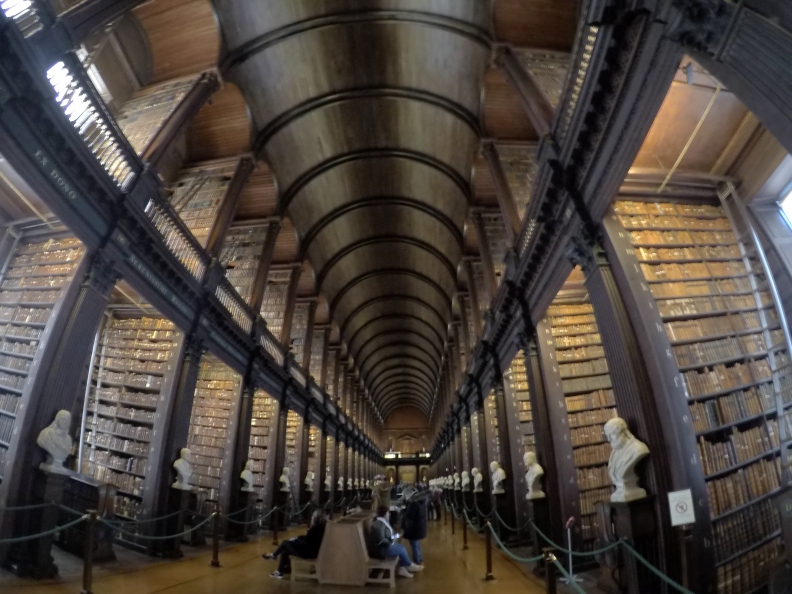

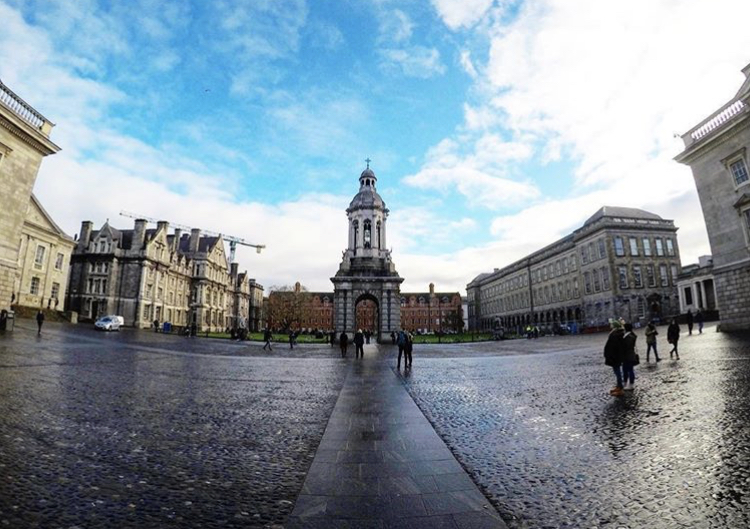
Distilleries and Breweries:
If this is your primary interest (no judgment here!), you can take this tour, Brewery Hops Tours of Ireland. If you are an average tourist, the best known are those of the Guinness Brewery and Jameson Whiskey.
Temple Bar:
I will publicly acknowledge my ignorance right here. I thought that Temple Bar was the famous Dublin pub, that red building you see on postcards and is a must-see stop (even if you pay 2 more euros per drink); that is The Temple Bar Pub. Temple Bar is the neighborhood where it is located. It is definitely one of the busiest parts of the city, and by God, do not miss it! Even if they tell you it is full of tourists. The cobbled pedestrian streets and brightly colored buildings are truly charming, no matter how many people there may be. You will find live music any day of the week. If you are like me and part of the fun of your trip is photography, and you want to avoid the crowds, walk around the area early in the morning (before 8:30 am) and you can explore the area on your own. Here is where Bono’s hotel, Clarence House, is located (of course we were there!), pubs for all tastes, very chic and very European nightclubs, the oldest pubs in Dublin, murals honoring singers and playwrights, art galleries and restaurants.

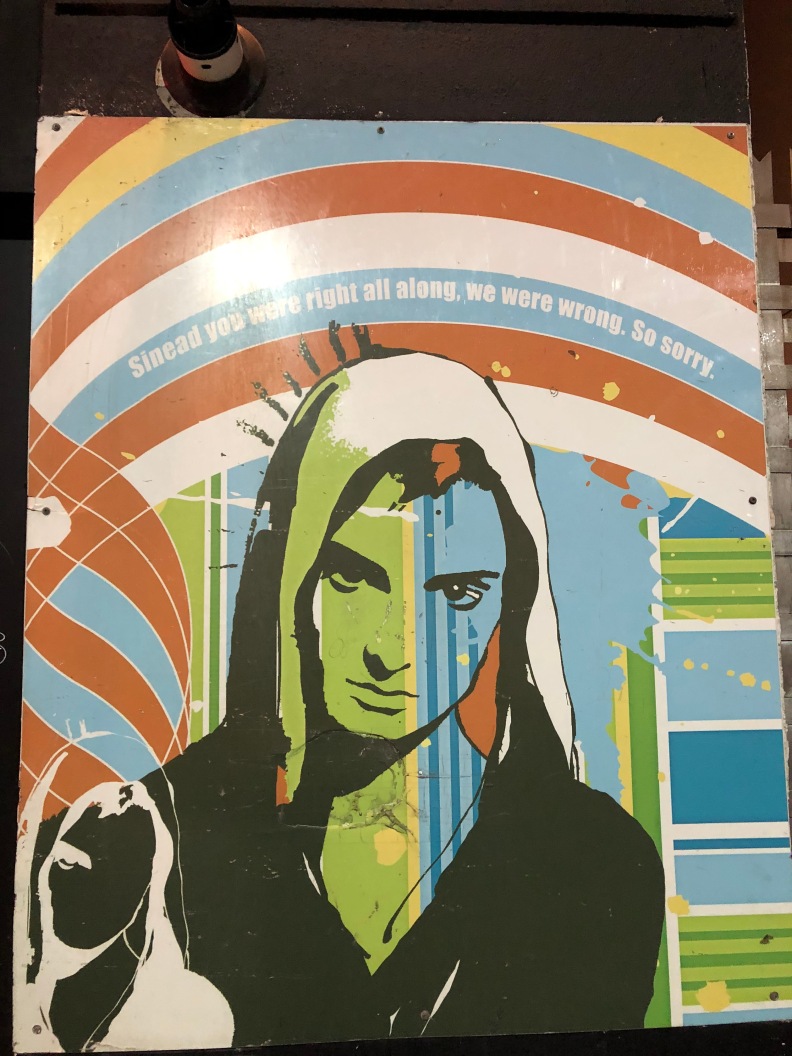
Oscar Wilde Monument:
Oscar Wilde is one of my favorite playwriters, not only for his literary work, which my mother taught me since I was a little girl, but also as a historical character. Eccentric, dramatic, he had to serve prison simply for being gay in the Victorian era. In London, there is a theater festival in his honor every year in the West End. Once in Paris, I stayed at the hotel that his last home and where he passed, and I was at the Pere-Lachaise, where his remains rest in a mausoleum in the shape of an Egyptian sphinx and full of pink kisses. The Irish monument, located in Merrion Square, is a collection of three statues, which commemorates the poet and dramatist. When the monument was inaugurated in 1997, made by artist Danny Osbourne, it was the first statue to commemorate Wilde in his homeland; he had died 97 years prior. It received almost unanimous praise for the materials used and for its location in front of his childhood home at 1, Merrion Square. The choice of pose for Wilde, which evokes images of “feminized masculinity”; the use of color for this colorful character, and his gaze directed at the naked male torso, unite with our knowledge of his homosexuality. It is said that, as a result, you could see an excessive emphasis on his sexuality in this work. However, Ireland was the first European country to approve equal marriage. Good for Ireland!
Wilde once said, “I can resist anything but temptation …”
Day trip: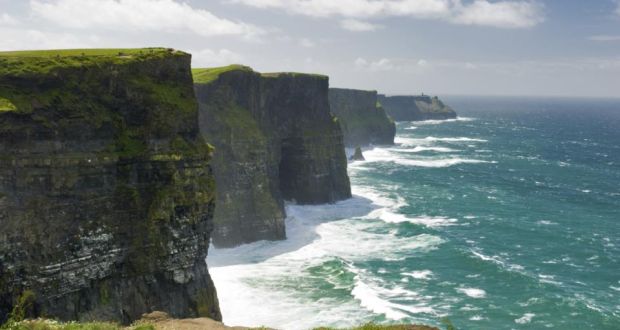
Galway and the Cliffs of Moher. In the western part of the island, are the famous Cliffs of Moher. The cliffs are a UNESCO geo-park that is breathtakingly impressive. I don’t think any of my photos do them justice. For this visit, we took a tour out of Dublin, with a guide part tour guide, part rockstar, who sang “Brown Eyed Girl” on our tour bus (from Irishman Van Morrison), and taught us how to correctly do the claps for The Wild Rover (later we did not fail them in any pub). On the way to the cliffs, we made a stop at the ruins of the old Kilmacduagh Abbey, we passed through a small village where every year they hold a match-making festival (they choose one person annually to introduce singles in the village; in the ’60 and ’70 became a bit wild, now it is more aimed at older people looking for love). Finally, we arrived. Wow! They really take your breath away. The cliffs were the site of a gigantic river delta and they formed about 320 million years ago. Its oldest rocks are at the bottom of the cliffs and rise about 214 meters (702 feet). They have appeared in one of my favorite movies, The Princess Bride (1987), as the “cliffs of insanity”, as the Horcrux Cave in Harry Potter and the Half-Blood Prince (2009) and in Leap Year with Amy Adams (2010), among others.
On the way back, we made a stop – supposedly short, but the tour bus almost left me, to see part of the Wild Atlantic Way, a 1,553-mile tourist route that runs through nine counties and looks arid, rocky, gray and as its name says, wild; it also has very hairy cows and sheep, and then on to Galway.
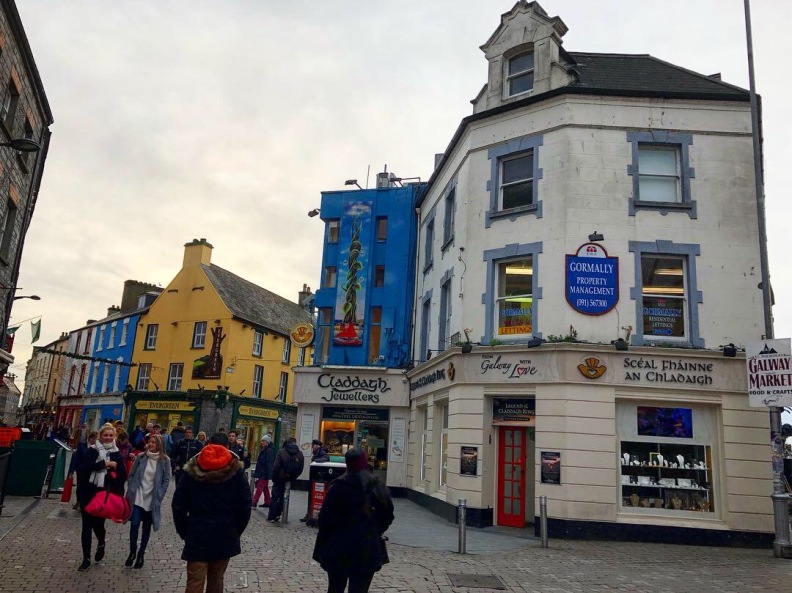
Galway is a charming port city where the Corrib River meets the Atlantic. In the center of the city is Eyre Square, which dates back to the 18th century and is a meeting point surrounded by traditional shops and pubs. Here our rockstar guide told us that Ed Sheeran filmed his video of Galway Girl, in O’Connell’s Pub. Of course, we had a whiskey there before heading back to Dublin.
Finally, something that is very touristy, but we felt obliged to see, was a traditional River Dance show, the traditional Irish music and dance show. The best known is at the Arlington Hotel, near the O’Connell Bridge; it includes a three-course dinner. Drinks are separate.
Fun fact that I learned after my return: the remains of Saint Valentine, the patron saint of love, rest in the Irish capital, in Whitefiar Church. Saint Valentine was executed in Rome in the third century, but you know we as Catholics love the morbidity of relics of saints, and in 1835 a good Irish priest asked the Vatican to exhume the saint’s remains to take them as a gift to his countrymen. Now, it has become a place of pilgrimage for Irish people who need extra help in these complicated matters of the heart. No, I was not there.
Notes:
- The tour to Galway was done with McCool Finn Tours; Recommended!
- We stayed at the Custom House Hilton Garden Inn; excellent service and location.
